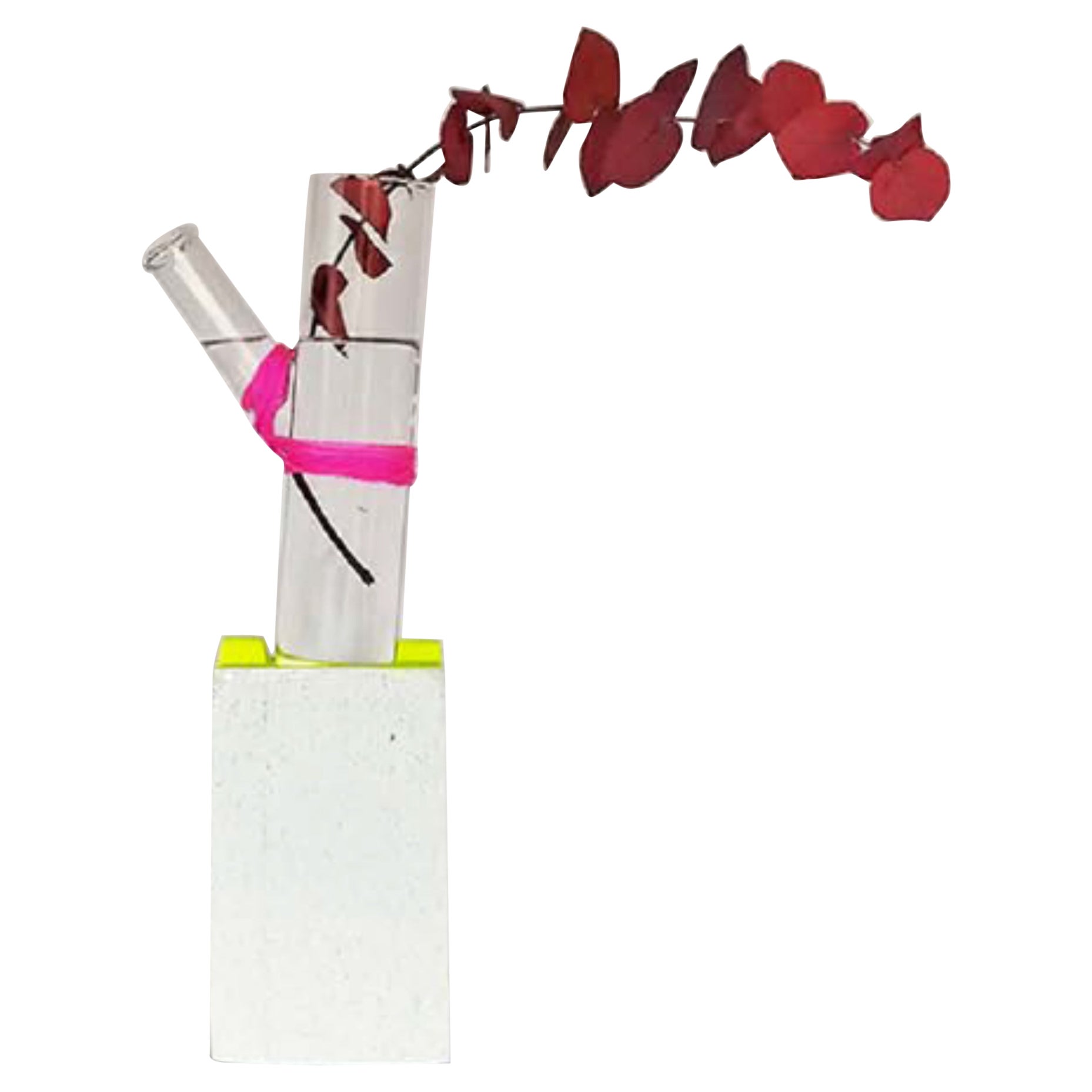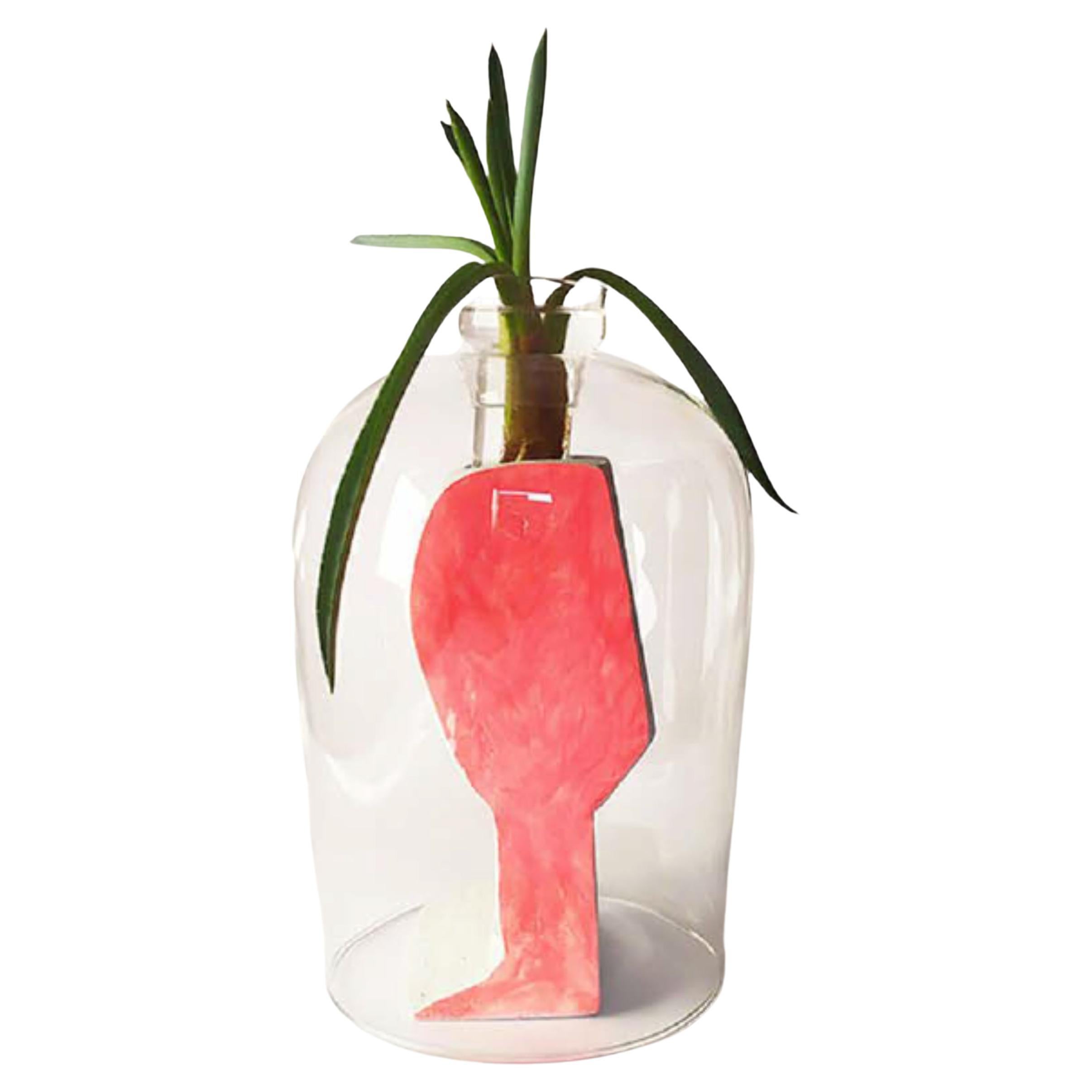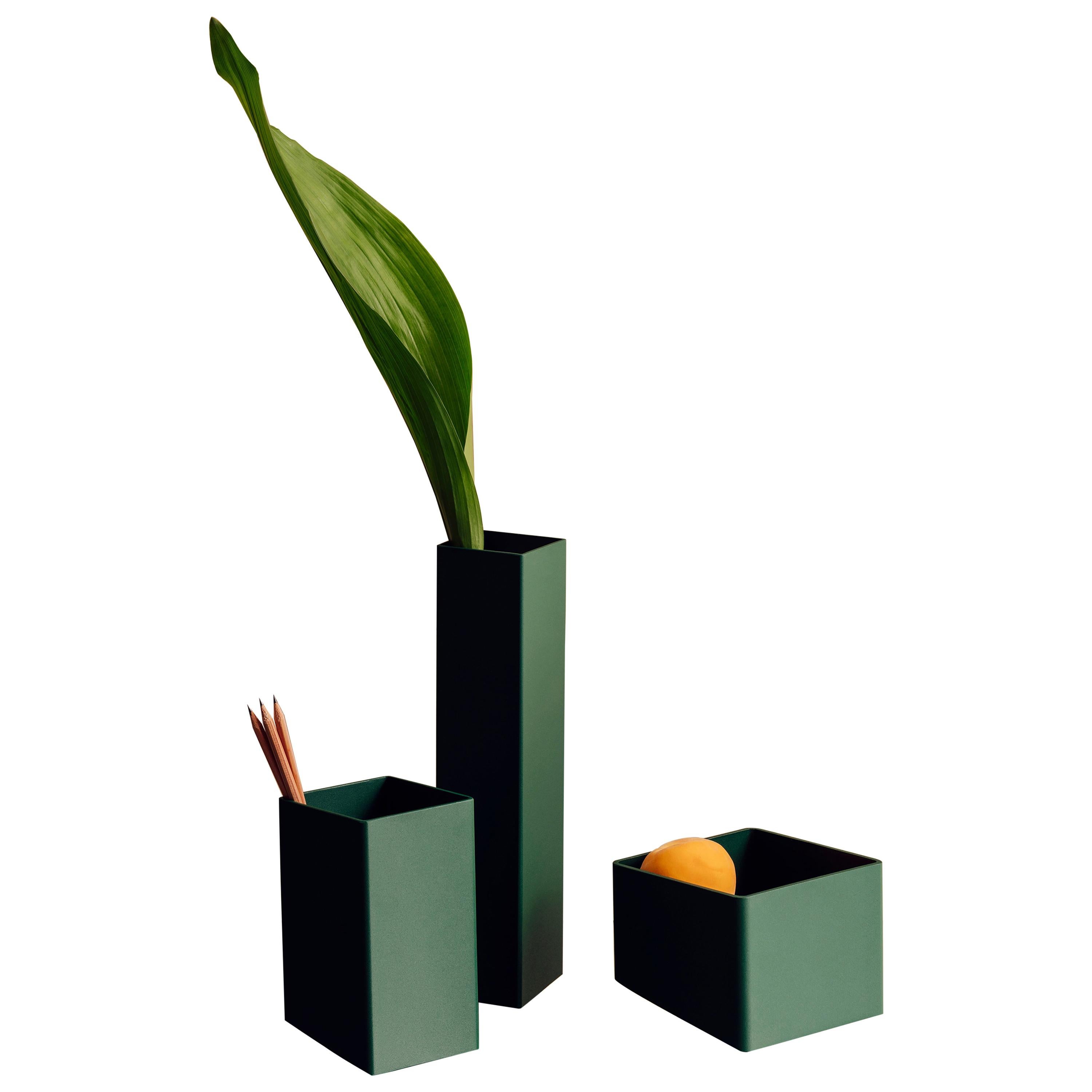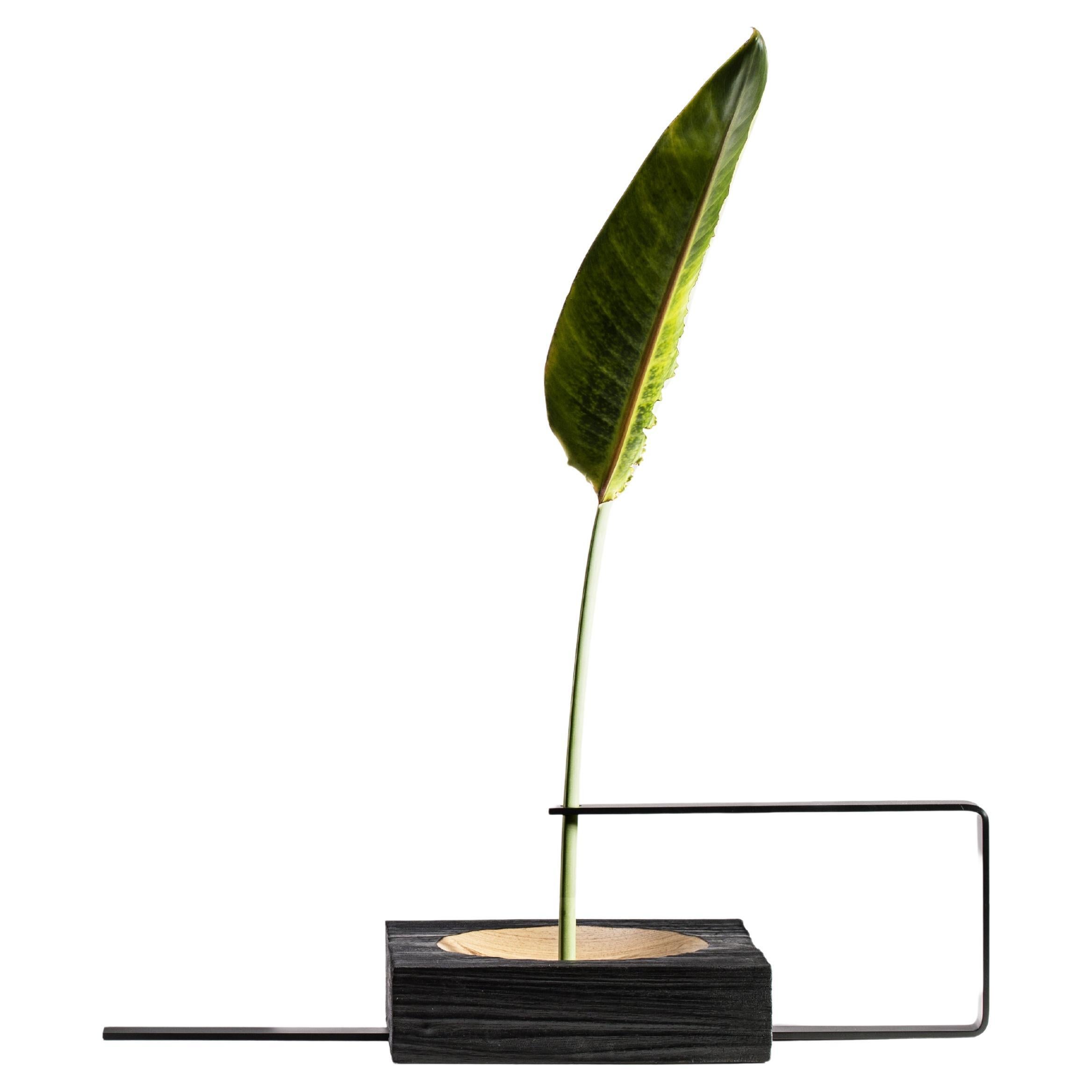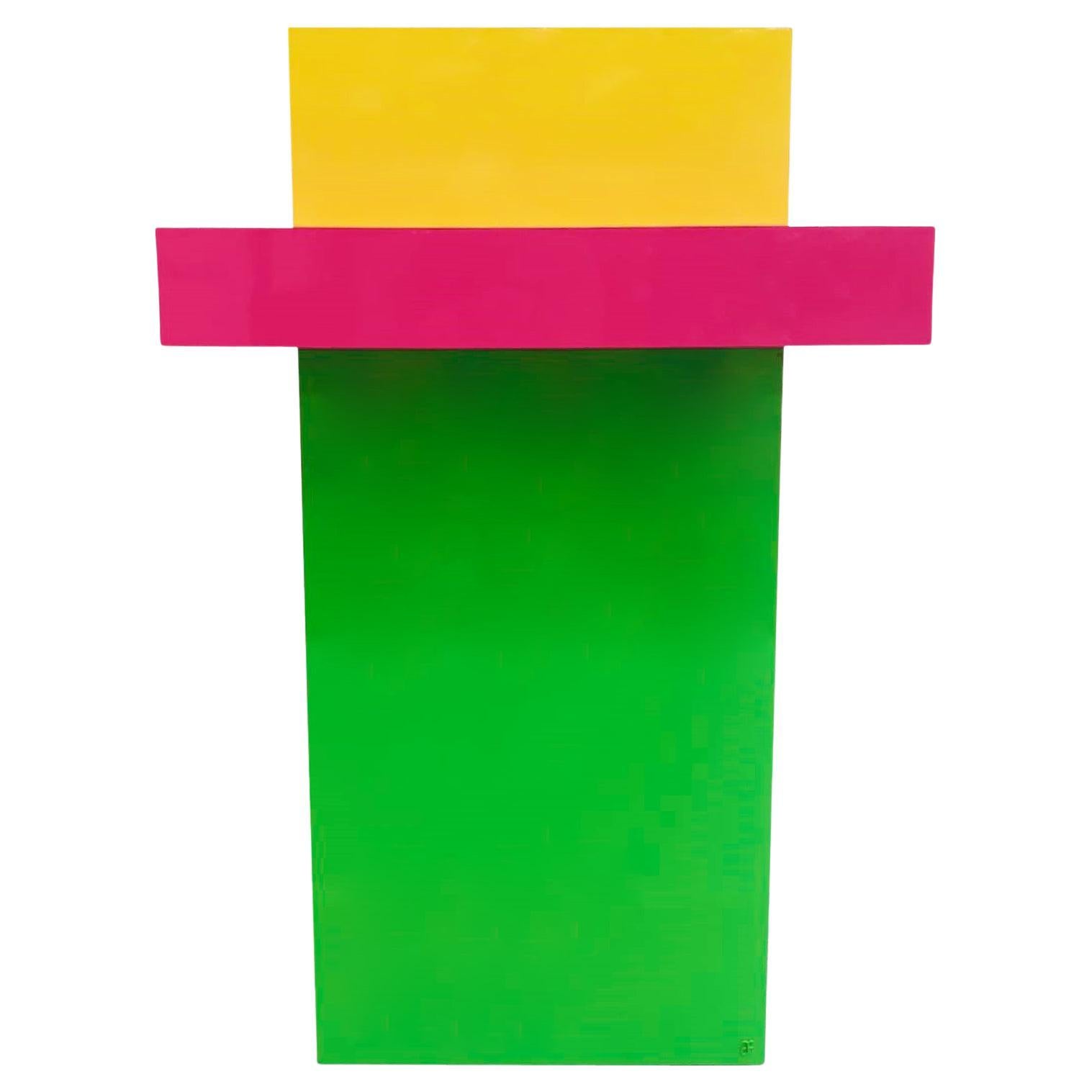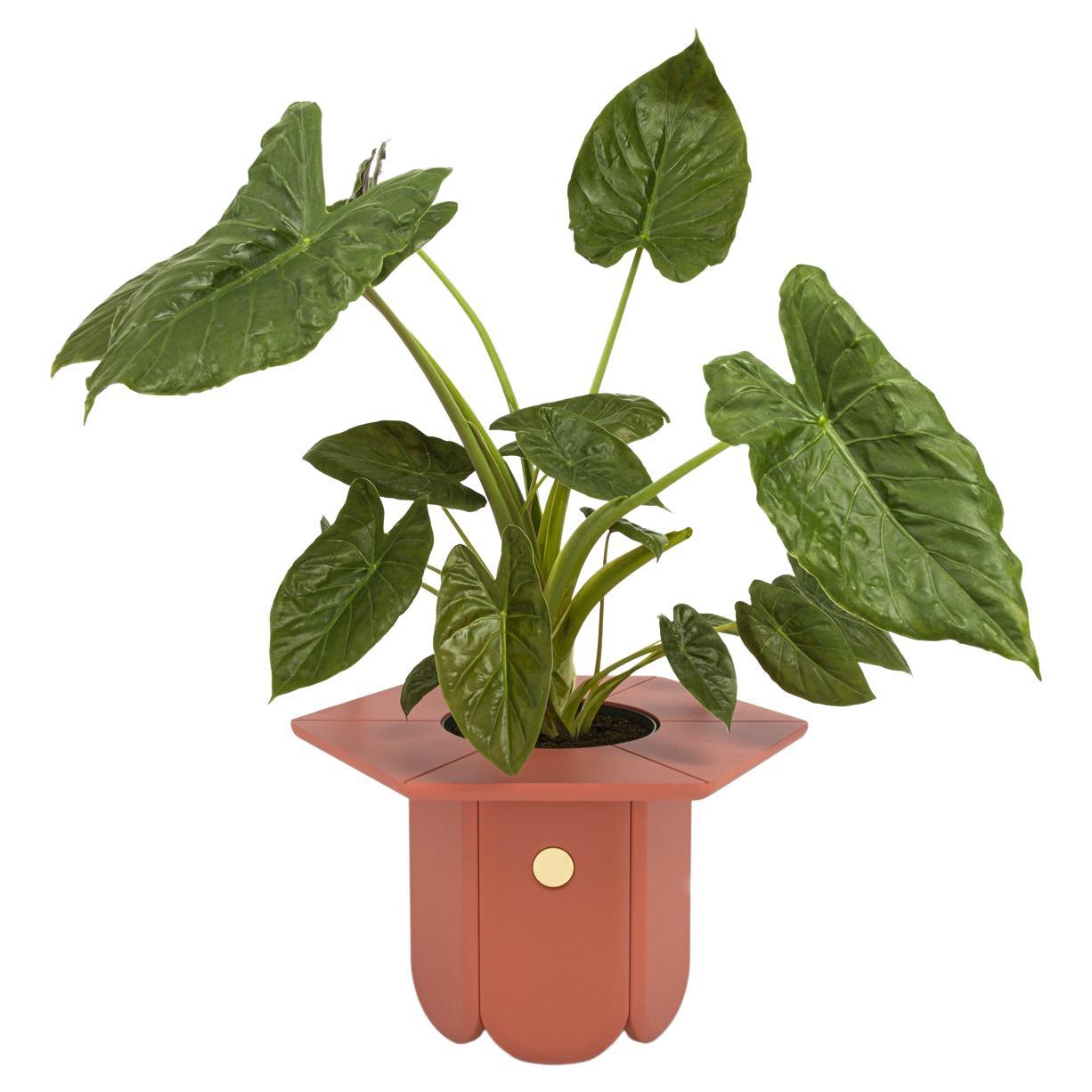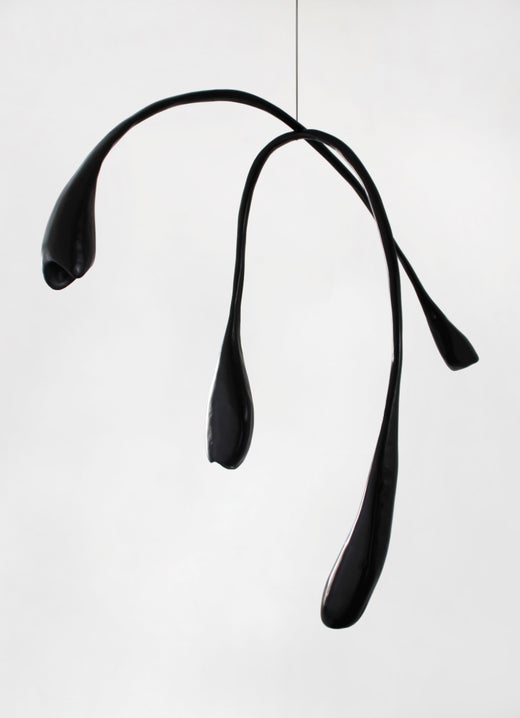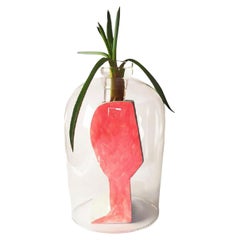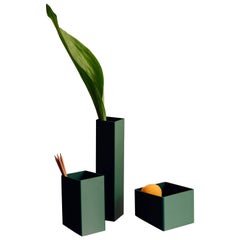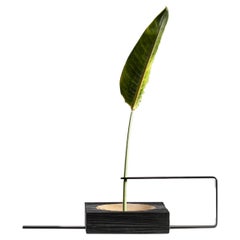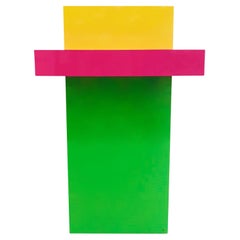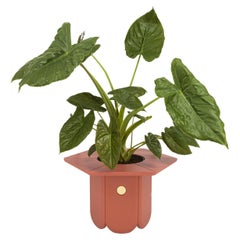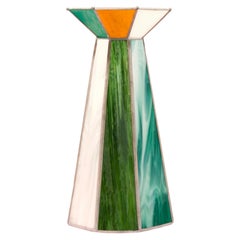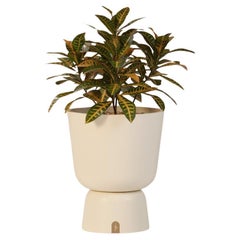Want more images or videos?
Request additional images or videos from the seller
1 of 6
CF KH 14 by Caturegli Formica
$7,464.20per item
£5,593.02per item
€6,320per item
CA$10,480.56per item
A$11,486.38per item
CHF 5,998.41per item
MX$137,823.30per item
NOK 75,320.23per item
SEK 70,948.86per item
DKK 48,138.14per item
Quantity
About the Item
CF KH 14 by Caturegli Formica
Dimensions: W 14.5 x D 8 H 30 cm
Materials: Concrete, plaster, paint, glass, cotton
Khalikia (?a????a) vessels, 2017-18.
These pieces are made by assembling many small pieces of dusty rubble.
We already live in our rubble and sooner or later all the things we do will become ruins.
In the midst of the ruins, there is always someone who does not stop, does not give up, who has energy and who continues to go on and eventually to tire his fate. Someone who uses rubble.
For these brave builders and rebuilders, rubble is a consumer good. That's right, it is a wealth, a building material to use.
Carl Andrè answered a policeman who asked him by what right he took the remains on the street: these things have no value for the society that threw them away and therefore no longer belong to anyone!
Biographical notes
Beppe Caturegli (1957) and Giovannella Formica (1957-2019) shared a background in the cultural atmosphere of the Radical Architecture movement in Florence. After taking architecture degrees in 1982, they moved to Milan to begin a long, intense working relationship with Ettore Sottsass, the Memphis group and the magazine Terrazzo.
In 1987 they opened the Caturegli Formica Architetti Associati studio and for ten years they worked as consultants for Computer Associates, a US-based software firm, for which they designed facilities in Milan and Rome. Alongside work on architecture and interiors, they have designed products for many different Italian and international companies, including Sanyo, WMF and Fontana Arte.
Their curiosity and passion for architecture around the world has led to frequent trips to the United States and Japan, and then regular travels in India and several African countries, where they have conducted research in collaboration with local architects, artists and artisans. The aim is to enrich the meaning of products, projects and works of architecture, using mixed systems: industrial/crafts, global/local, mass-produced/one-off.
In the period 1987-1991 they created Terre, a ceramics series produced in the workshop Céramiques Almadies, and collaborated with the design group 100% Dakar, honoured by the President-poet Léopold Senghor for their work on racial integration.
From 1989 to 1993 they worked on the restoration and extension of a vast estate in Madras (Chennai), and made a series of symbolic stone objects in collaboration with the sculptors of Mahabalipuram.
Their work is very heterogeneous, ranging from residential and commercial architecture to restoration, interiors to furniture, lamps and flatware, paintings and ceramics to video.
Since the early 1980s they have designed carpets, seen both as useful objects and as maps of knowledge. Most of the carpets are part of site specific works for private clients. This is a way of working on the applied arts that goes almost against the current, in a period in which industrial design moves toward global standardization and uniformity.
In 1989 they participated, together with the Memphis group, in the exhibition Carpets at the Design Gallery, and created a collection of carpets and tapestries for Elio Palmisano in Turkey and Italy. Later, they have also worked in Iran, China, Singapore, Hong Kong, Kashmir and Tibet, collaborating with craftsmen and selecting small companies that use purification systems for water used in colouring, and apply procedures for the safety and well-being of workers.
Since 2004, Nilufar Gallery has shown the Caturegli Formica carpets collections .
In 2007, for the exhibition Onehundred, they presented Super-market, a collection of cabinets called Photo-boxes and characterized by images reproduced on the doors that show the geography of global consumption and document real places and objects of the planet.
In 2010 they presented a series of twenty photo-montages and eight collections of rugs for their exhibition Nodi/Hubs, a kind of reflection on certain macro-knots of occidental thinking: the environment and consumption of the territory, genetics and GMOs, catastrophes, chaos theory, archival storage and the mind, the chemical essence of life.
One aspect of their research, honoured with international prizes and publications, is the structural use of colour and light in architecture. More recently, they have put great commitment and research into an energetic use of light, in the context of bio-architecture projects with objectives of heightened sustainability.
In 2004-2014 they carried on the project of restoration and revitalization of a vast historic property in Tuscany, where they have applied advanced solutions for energy supply and savings, through the use of a range of integrated alternative energy sources. The Tenuta dello Scompiglio estate includes a theatre, rehearsal rooms for musicians, an art gallery, a restaurant, residences for artists and many hectares for biodynamic agriculture.
In 2014-2017 they designed several spaces devoted to host art collections and produced seven new rugs collections, embroideries, furnitures, vessels, photomontages and concept books.
Their works have been showed at the Deichtorhallen Hamburg, Centre Pompidou Paris, Mino Ceramic Art Museum Japan, Metropolitan Museum of Art NYC, Triennale di Milano.
- Dimensions:Height: 11.82 in (30 cm)Width: 5.71 in (14.5 cm)Depth: 3.15 in (8 cm)
- Style:Post-Modern (Of the Period)
- Materials and Techniques:
- Place of Origin:
- Period:
- Date of Manufacture:2022
- Production Type:New & Custom(Current Production)
- Estimated Production Time:7-8 weeks
- Condition:
- Seller Location:Geneve, CH
- Reference Number:1stDibs: LU1219234015202
Galerie Philia
Galerie Philia is an international contemporary sculptural design and art gallery representing emerging and established designers and artists. The gallery is the brainchild of two brothers who share a lifetime passion for art, literature and philosophy. Their distinct academic background sets them apart from their peers, as it sees them following a rhizomatic and transcultural approach in the way they select works. This involves combining elements from multiple cultures in what becomes a network of harmoniously interconnected roots, ultimately revealing the beauty of each unique creation. The gallery’s non-hierarchical curation sits apart from the ephemerality of trends and focuses instead on the true aesthetic quality of the piece – alluring and timeless. Unlike others, Galerie Philia does not focus on a single style – whether minimalist, organic or raw – but rather embraces heterogeneity. The Galerie Philia takes pride in discovering new talents, providing them with multiple international platforms to showcase their latest creations. As well as propelling the newest generation of 21st century collectible design, Galerie Philia also works with internationally known design artists. Galerie Philia has a strong international presence, with galleries in Geneva, New York and Singapore. In addition to their permanent spaces, the gallery organizes temporary group exhibitions and artists residencies in first-class locations around the world.
Made to order creations can be done: please contact us for any request.
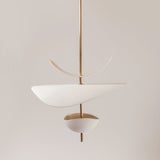
About the Seller
5.0
Recognized Seller
These prestigious sellers are industry leaders and represent the highest echelon for item quality and design.
Diamond Seller
Premium sellers with a 4.7+ rating and 24-hour response times
Established in 2015
1stDibs seller since 2015
5,075 sales on 1stDibs
Typical response time: <1 hour
- ShippingRetrieving quote...Shipping from: Milano, Italy
- Return Policy
Authenticity Guarantee
In the unlikely event there’s an issue with an item’s authenticity, contact us within 1 year for a full refund. DetailsMoney-Back Guarantee
If your item is not as described, is damaged in transit, or does not arrive, contact us within 7 days for a full refund. Details24-Hour Cancellation
You have a 24-hour grace period in which to reconsider your purchase, with no questions asked.Vetted Professional Sellers
Our world-class sellers must adhere to strict standards for service and quality, maintaining the integrity of our listings.Price-Match Guarantee
If you find that a seller listed the same item for a lower price elsewhere, we’ll match it.Trusted Global Delivery
Our best-in-class carrier network provides specialized shipping options worldwide, including custom delivery.More From This Seller
View AllCF KH 16 by Caturegli Formica
Located in Geneve, CH
CF KH 16 by Caturegli Formica.
Dimensions: W 10 x D 7.5 H 29 cm.
Materials: Concrete, plaster, paint, glass, cotton.
Khalikia (?a????a) vessels, 2017-18.
These pieces are m...
Category
2010s Italian Post-Modern Planters, Cachepots and Jardinières
Materials
Concrete
$6,365 / item
CF KH 22 by Caturegli Formica
Located in Geneve, CH
CF KH 22 by Caturegli Formica
Dimensions: W 19 x D 19 H 30 cm
Materials: Concrete, plaster, paint, glass, cotton
Khalikia (?a????a) vessels, 2017-18.
These pieces are made ...
Category
2010s Italian Post-Modern Planters, Cachepots and Jardinières
Materials
Concrete
$10,003 / item
KM0 by Júlia Esqué
Located in Geneve, CH
KM0 by Júlia Esqué
Dimensions: 70 x 70 x 330mm / 140 x 140 x 110mm / 100 x 100 x 180mm
Materials: Textured epoxy painted steel
Colors:
By default RAL 6005
Possibility to d...
Category
2010s Spanish Modern Vases
Materials
Epoxy Resin
$1,883 / set
Wood and Aluminum Vaso Torno by Atelier Andre Ferri
Located in Geneve, CH
Wood and Aluminum Vaso Torno by Atelier Andre Ferri
Dimensions: W 25 x D 60 x H 15.5 cm
Materials: Wood, Aluminum.
ANDRÉ FERRI
André Ferri is from Belo Horizonte, born in 1990, g...
Category
2010s Brazilian Post-Modern Vases
Materials
Aluminum
$1,133 / item
Wood and Aluminum Vaso Torno by Atelier Andre Ferri
Located in Geneve, CH
Wood and Aluminum Vaso Torno by Atelier Andre Ferri
Dimensions: W 25 x D 29.5 x H 32 cm
Materials: Wood, Aluminum.
ANDRÉ FERRI
André Ferri is from Belo Horizonte, born in 1990, g...
Category
2010s Brazilian Post-Modern Vases
Materials
Aluminum
$1,133 / item
Wood and Aluminum Vaso Torno by Atelier Andre Ferri
Located in Geneve, CH
Wood and Aluminum Vaso Torno by Atelier Andre Ferri
Dimensions: W 25 x D 32 x H 15.5 cm
Materials: Wood, Aluminum.
ANDRÉ FERRI
André Ferri is from Belo Horizonte, born in 1990, g...
Category
2010s Brazilian Post-Modern Vases
Materials
Aluminum
$1,133 / item
You May Also Like
Contemporary Jean Vase in Aluminium by Altreforme
By Elena Cutolo
Located in Calolziocorte (Lecco) Italy, IT
Pots, tribute to Jean Cocteau and to his movie Les Enfants Terribles.
Pricing excludes VAT.
Category
2010s Italian Modern Vases
Materials
Aluminum
$3,401 / item
21st Century Matteo Cibic Small Vase Matt Lacquered MDF Scapin Collezioni
By Matteo Cibic
Located in Tezze sul Brenta, IT
Ci Vase, design by Matteo Cibic, product by Scapin Collezioni
Ci is composed of six elements that define the volume of the product. Seen from above, this vase recalls a blooming bunch of flowers.
Materials: Matt lacquered MDF...
Category
21st Century and Contemporary Italian Modern Vases
Materials
Wood
Caleido Small Vase
By Serena Confalonieri
Located in Milano, MI
The progressive extinction of some traditional craft techniques brings with it a difficult availability of some materials: this is the case of some types of glass used for stained gl...
Category
2010s Italian Post-Modern Vases
Materials
Stained Glass
$1,121
Modern Planter for Outdoor Use
By Myface
Located in Santo Tirso, PT
Eden Planter
This stunning planter is perfect for displaying your favorite plants, and is sure to add a touch of elegance to any space.
Eden Planter is designed to be both durable ...
Category
21st Century and Contemporary Portuguese Modern Planters, Cachepots and ...
Materials
Fiberglass
$1,057 / item
21st Century Matteo Cibic Big Vase Glossy Lacquered MDF Scapin
By Matteo Cibic
Located in Tezze sul Brenta, IT
A Vase, design by Matteo Cibic, product by Scapin Collezioni
Ironic and zoomorphic, A is a vase with a great personality and strong aesthetic value. Materials: Glossy lacquered MDF...
Category
21st Century and Contemporary Italian Modern Vases
Materials
Wood
Soave Large by Piegatto, a Sculptural Planter
Located in Guatemala, GU
The "Soave Planter" is an elegant and modern piece designed to enhance both indoor and outdoor spaces.
Features a sleek, cylindrical form that exudes contemporary sophistication. It...
Category
2010s Guatemalan Planters, Cachepots and Jardinières
Materials
Fiberglass
$3,348 / item
Read More
Galerie Philia Unveils Limited-Edition Designs at Giampiero Tagliaferri’s New L.A. Studio
For the exhibition “Materia Perpetua,” the gallery asked an international group of makers — including Tagliaferri — to explore the possibilities of a surprisingly versatile material: onyx.
Galerie Philia Doesn’t Just Discover Fresh Design Talent — It Grows It
With an impressive slate of international exhibitions, the Geneva-based gallery raises the profiles of emerging designers.
More Ways To Browse
Green Vase Made In China
Italian Formica
Nilufar Gallery
Caturegli Formica
Antique Dutch Porcelain
Brass Vase With Handles
Blue Chinese Pots
Brass Planter Lions
Porcelain Cache Pot
Antique Copper Planter Pots
Copper Hammered Planter
Jardiniere And Stand Ceramic
Mid Century Terracotta Pot
Antique Blue And White Planters
Cloisonne Pot
Green Glazed Pots
Paris Jardiniere
Barbotine Majolica Vase
